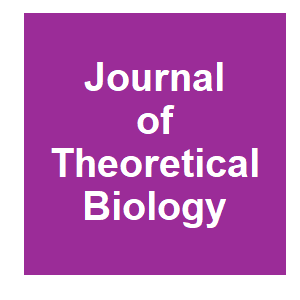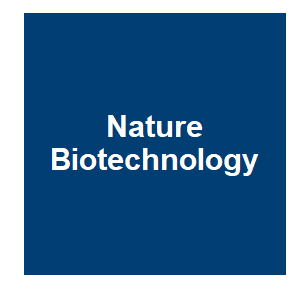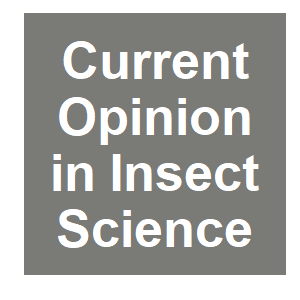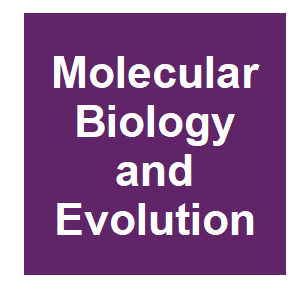
Keywords: homing endonuclease

|
CRISPR-based gene editing of non-homologous end joining factors biases DNA repair pathway choice toward single-strand annealing in Aedes aegyptiK. Chae, J. M. Overcash, C. Dawson, C. Valentin, H. Tsujimoto, K. M. Myles and Z. N. Adelman, Current Research in Biotechnology, 5:100133. 2023.
To maintain genome stability, eukaryotic cells orchestrate DNA repair pathways to process DNA double-strand breaks (DSBs) that result from diverse developmental or environmental stimuli. Bias in the selection of DSB repair pathways, either non-homologous end joining (NHEJ) or ... Keywords: CRISPR, gene drive synthetic, homing endonuclease, inbreeding, models, resistance, synthetic homing drive |

|
Autocatalytic-protection for an unknown locus CRISPR-Cas countermeasure for undesired mutagenic chain reactionsE. Schonfeld, E. Schonfeld and D. Schonfeld, Journal of Theoretical Biology, 528:110831. 2021.
The mutagenic chain reaction (MCR) is a genetic tool to use a CRISPR–Cas construct to introduce a homing endonuclease, allowing gene drive to influence whole populations in a minimal number of generations (Esvelt et al., 2014, Gantz and Bier, 2015, Gantz and Bier, 2016). The ... Keywords: CRISPR, gene drive synthetic, homing endonuclease, inbreeding, models, resistance, synthetic homing drive |

|
Converting endogenous genes of the malaria mosquito into simple non-autonomous gene drives for population replacementA. Hoermann, S. Tapanelli, P. Capriotti, G. Del Corsano, E. K. G. Masters, T. Habtewold, G. K. Christophides and N. Windbichler, eLife, 10. 2021.
Gene drives for mosquito population replacement are promising tools for malaria control. However, there is currently no clear pathway for safely testing such tools in endemic countries. The lack of well-characterized promoters for infection-relevant tissues and regulatory hurdles ... Keywords: CRISPR, gene drive synthetic, homing endonuclease, inbreeding, models, resistance, synthetic homing drive |

|
A CRISPR endonuclease gene drive reveals two distinct mechanisms of inheritance biasS. A. N. Verkuijl, E. González, J. X. D. Ang, M. Li, N. P. Kandul, M. Anderson, O. S. Akbari, M. Bonsall and L. Alphey, bioRxiv, 2020.12.15.421271. 2020.
In this study, we report the functioning of sds3, bgcn, and nup50 expressed Cas9 in an Aedes aegypti homing split drive system targeting the white gene. We report their inheritance biasing capability, propensity for maternal deposition, and zygotic/somatic expression. ... Keywords: CRISPR, gene drive synthetic, homing endonuclease, inbreeding, models, resistance, synthetic homing drive |

|
A male-biased sex-distorter gene drive for the human malaria vector Anopheles gambiaeA. Simoni, A. M. Hammond, A. K. Beaghton, R. Galizi, C. Taxiarchi, K. Kyrou, D. Meacci, M. Gribble, G. Morselli, A. Burt, T. Nolan and A. Crisanti, Nature Biotechnology, 2020.
We report a male-biased sex-distorter gene drive (SDGD) in the human malaria vector Anopheles gambiae. Keywords: CRISPR, gene drive synthetic, homing endonuclease, inbreeding, models, resistance, synthetic homing drive |

|
Gene technologies in weed management: a technical feasibility analysisN. Kumaran, A. Choudhary, M. Legros, A. W. Sheppard, L. G. Barrett, D. M. Gardiner and S. Raghu, Current Opinion in Insect Science, 38:6-14. 2020.
With the advent of new genetic technologies such as gene silencing and gene drive, efforts to develop additional management tools for weed management is gaining significant momentum. These technologies promise novel ways to develop sustainable weed control options because gene ... Keywords: CRISPR, gene drive synthetic, homing endonuclease, inbreeding, models, resistance, synthetic homing drive |

|
Daisy-chain gene drivesMIT Media Lab, , 2019.
Who should decide whether, when, and how to alter the environment? These are hard questions, especially when the decisions will impact people in many different communities or nations. Daisy drive systems may help by empowering local communities to make decisions concerning their ... Keywords: CRISPR, gene drive synthetic, homing endonuclease, inbreeding, models, resistance, synthetic homing drive |

|
Behavior of homing endonuclease gene drives targeting genes required for viability or female fertility with multiplexed guide RNAsOberhofer, GI, Tobin; Hay, Bruce A., Proceedings of the National Academy of Sciences of the United States of America, 115:e9343. 2018.
Homing endonuclease gene (HEG)-based gene drive can bring about population suppression when genes required for viability or fertility are targeted. However, these strategies are vulnerable to failure through mechanisms that create alleles resistant to cleavage but that retain ... Keywords: CRISPR, gene drive synthetic, homing endonuclease, inbreeding, models, resistance, synthetic homing drive |

|
Gene drive for Malaria control | Andrea Crisanti |TEDx, , 2017.
Andrea discusses his team's laboratory work that has developed a revolutionary technology to spread genetic modifications from few laboratory mosquitoes to wild populations to eradicate malaria in the near future Keywords: CRISPR, gene drive synthetic, homing endonuclease, inbreeding, models, resistance, synthetic homing drive |

|
Lethal Gene Drive Selects InbreedingJ. J. Bull, bioRxiv, 046847. 2016.
ere, population genetic models are used to consider the evolution of inbreeding (specifically selfing) as a possible response to a recessively lethal HEG with complete segregation distortion. Numerical analyses indicate a rich set of outcomes, but selfing often evolves in ... Keywords: CRISPR, gene drive synthetic, homing endonuclease, inbreeding, models, resistance, synthetic homing drive |

|
Site-specific selfish genes as tools for the control and genetic engineering of natural populationsBurt, A, Proceedings of the Royal Society B-Biological Sciences, 270:921-928. 2003.
Site-specific selfish genes exploit host functions to copy themselves into a defined target DNA sequence, and include homing endonuclease genes, group II introns and some LINE-like transposable elements. If such genes can be engineered to target new host sequences, then they can ... Keywords: CRISPR, gene drive synthetic, homing endonuclease, inbreeding, models, resistance, synthetic homing drive |

|
Adaptation for horizontal transfer in a homing endonucleaseKoufopanou, VG, M. R.; Burt, A., Molecular Biology and Evolution, 19:239-246. 2002.
Selfish genes of no function other than self-propagation are susceptible to degeneration if they become fixed in a population. and regular transfer to new species may be the only means for their long-term persistence. To test this idea we surveyed 24 species of yeast for VDE, a ... Keywords: CRISPR, gene drive synthetic, homing endonuclease, inbreeding, models, resistance, synthetic homing drive |

|
Outcrossed sex allows a selfish gene to invade yeast populationsGoddard, MRG, D.; Burt, A., Proceedings of the Royal Society B-Biological Sciences, 268:2537-2542. 2001.
Homing endonuclease genes (HEGs) in eukaryotes are optional genes that have no obvious effect on host phenotype except for causing chromosomes not containing a cop), of the gene to be cut, thus causing them to be inherited at a greater than Mendelian rate via gene conversion. ... Keywords: CRISPR, gene drive synthetic, homing endonuclease, inbreeding, models, resistance, synthetic homing drive |

Contact
David O’Brochta
Foundation for the
National Institutes of Health
geneconvenevi@fnih.org
RSS

